Usuario "stescobedo"
Se han encontrado 8 Coincidencias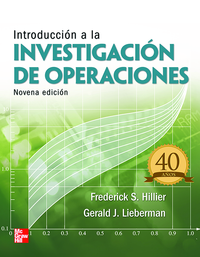
Introducción a la investigación de operaciones
123 Visitas | 134 Descargas | 2016-12-12 18:39:19 | stescobedo
Desde el advenimiento de la Revolución industrial, el mundo ha sido testigo de un crecimiento importante del tamaño y la complejidad de las organizaciones. Los pequeños talleres artesanales de épocas anteriores se convirtieron en las corporaciones actuales de miles de millones de dólares. Una parte esencial de este cambio revolucionario fue el gran aumento de la división del trabajo y de la separación de las responsabilidades administrativas en estas organizaciones. Los resultados han sido espectaculares. Sin embargo, junto con los benefi cios, el aumento del grado de especialización trajo consigo problemas nuevos que aún existen en numerosas organizaciones. Uno de éstos es la tendencia de algunos componentes de una organización a convertirse en imperios con autonomía relativa, con sus propias metas y sistemas de valores; de esta manera pierden de vista la forma en que sus actividades y objetivos se acoplan a los de toda la organización. Con frecuencia, lo que es mejor para un componente va en detrimento de otro, de forma que sus acciones pueden caminar hacia objetivos opuestos. Un problema relacionado es que, en la medida que aumentan la complejidad y la especialización, es más difícil asignar los recursos disponibles a las diferentes actividades de la manera más eficaz para la organización como un todo. Este tipo de problemas y la necesidad de encontrar la mejor forma de resolverlos crearon el ambiente propicio para el surgimiento de la investigación de operaciones, a la que también se hace referencia como IO.
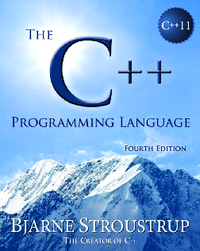
The C++ Programming Language
158 Visitas | 156 Descargas | 2016-12-12 18:44:26 | stescobedo
The use of C++ has changed dramatically over the years and so has the language itself. From the point of view of a programmer, most of the changes have been improvements. The current ISO standard C++ (ISO/IEC 14882-2011, usually called C++11) is simply a far better tool for writing quality software than were previous versions. How is it a better tool? What kinds of programming styles and techniques does modern C++ support? What language and standard-library features support those techniques? What are the basic building blocks of elegant, correct, maintainable, and efficient C++ code? Those are the key questions answered by this book. Many answers are not the same as you would find with 1985, 1995, or 2005 vintage C++: progress happens.
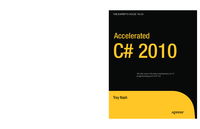
Accelerated C Sharp 2010
73 Visitas | 91 Descargas | 2016-12-12 18:54:56 | stescobedo
Visual C# .NET (C#) is relatively easy to learn for anyone familiar with another object-oriented language. Even someone familiar with Visual Basic 6.0, who is looking for an object-oriented language, will find C# easy to pick up. However, though C#, coupled with the .NET Framework, provides a quick path for creating simple applications, you still must know a wealth of information and understand how to use it correctly in order to produce sophisticated, robust, fault-tolerant C# applications. I teach you what you need to know and explain how best to use your knowledge so that you can quickly develop true C# expertise. Idioms and design patterns are invaluable for developing and applying expertise, and I show you how to use many of them to create applications that are efficient, robust, fault-tolerant, and exceptionsafe. Although many are familiar to C++ and Java programmers, some are unique to .NET and its Common Language Runtime (CLR). I show you how to apply these indispensable idioms and design techniques to seamlessly integrate your C# applications with the .NET runtime, focusing on the new capabilities of C# 3.0
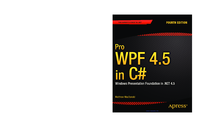
Pro WPF 4.5 in C#
84 Visitas | 91 Descargas | 2016-12-12 19:01:47 | stescobedo
The Windows Presentation Foundation (WPF) is a modern graphical display system for Windows. It’s a radical change from the technologies that came before it, with innovative features such as built-in hardware acceleration and resolution independence, both of which you’ll explore in this chapter. WPF is the best toolkit to use if you want to build a rich desktop application that runs on Windows Vista, Windows 7, and Windows 8 in desktop mode (as well as the corresponding versions of Windows Server). In fact, it’s the only general-purpose toolkit that targets these versions of Windows. By comparison, Microsoft’s new Metro toolkit—although exciting—is limited to Windows 8 systems only. (WPF applications can even be made to run on ancient Windows XP computers, which are still found in many businesses. The only limitation is that you must configure Visual Studio to target the slightly older .NET 4.0 Framework, rather than .NET 4.5.) In this book, you’ll take your first look at the architecture of WPF. You’ll learn how it deals with varying screen resolutions, and you’ll get a high-level survey of its core assemblies and classes. You’ll also consider how WPF has evolved from its initial release to version 4.5
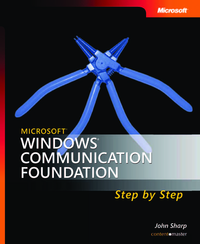
Microsoft Windows Comunication Foundation
76 Visitas | 81 Descargas | 2016-12-12 19:10:41 | stescobedo
Microsoft Windows Communication Foundation (WCF), alongside Windows Workflow Foundation (WF) and Windows Presentation Foundation (WPF), is intended to become the primary framework for building the next wave of business applications for the Microsoft Windows operating system. WCF enables you to build powerful service-oriented systems, based on connected services and applications. You can use WCF to create new services, as well as augment and interoperate with the functionality available through many existing services created by using other technologies. When designing distributed applications in the past, you frequently had to choose a specific technology, such as Web services, COM+, Microsoft Message Queue, or .NET Framework Remoting. This choice often had a fundamental impact on the architecture of your solutions. WCF provides a consistent model for using a variety of technologies, enabling you to design and architect your solutions without being restricted by a specific connectivity mechanism.
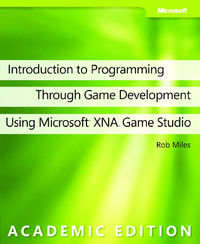
Introduction to Programming Through Game Development Using Microsoft XNA Game Studio eBook
69 Visitas | 94 Descargas | 2016-12-12 19:17:06 | stescobedo
This book teaches you programming from first principles . It shows you how to use the C# language to solve problems and how C# is used within the Microsoft XNA Framework to create computer games . The games that you write can run on a Microsoft Windows PC, an Xbox 360, or a Zune device . Along the way you will also gain an insight into how software is created, and what makes an effective programmer .
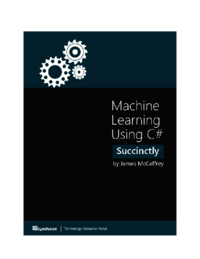
Machine Learning Using C Sharp
110 Visitas | 146 Descargas | 2016-12-12 19:21:05 | stescobedo
Data clustering is the process of placing data items into groups so that similar items are in the same group (cluster) and dissimilar items are in different groups. After a data set has been clustered, it can be examined to find interesting patterns. For example, a data set of sales transactions might be clustered and then inspected to see if there are differences between the shopping patterns of men and women.

Programación de Sistemas
Programación de Sistemas
148 Visitas | 165 Descargas | 2016-12-12 19:26:15 | stescobedo
En este texto repasaremos conceptos de multiprogramación como las definiciones de programa, proceso e hilos, y explicaremos el mecanismo de llamadas al sistema que emplea Linux para poder aceptar las peticiones desde el entorno de usuario. Seguidamente veremos las posibilidades que nos ofrece el Compilador de C de GNU, GCC, y programaremos nuestros primeros ejecutables para GNU/Linux. Después de repasar las llamadas al sistema más comunes, analizaremos las particularidades de UNIX a la hora de manejar directorios, permisos, etc., y nos adentraremos en la Comunicación Interproceso (IPC). Finalmente abordaremos de forma introductoria la programación de sockets de red, para dotar de capacidades telemáticas a nuestros programas.
Contribuir
Usted puede contribuir con Libros UCLV, es importante para nosotros su aporte..
Contribuir